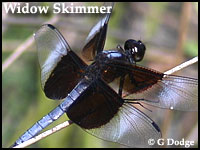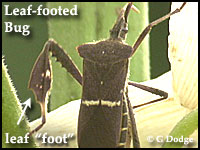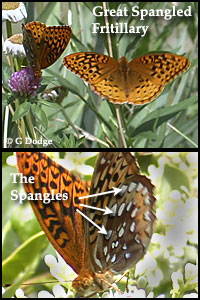 With the heat comes more insects, and for the ode (dragonfly and damselfly) lovers among you, good news. June has brought us five more species of dragonfly. Eastern Pondhawk, Twelve-spotted Skimmer, Widow Skimmer, Great Blue Skimmer, and the tiny yet very distinctive Eastern Amberwing have all joined the growing list of twenty-one species seen since the first of the year.
With the heat comes more insects, and for the ode (dragonfly and damselfly) lovers among you, good news. June has brought us five more species of dragonfly. Eastern Pondhawk, Twelve-spotted Skimmer, Widow Skimmer, Great Blue Skimmer, and the tiny yet very distinctive Eastern Amberwing have all joined the growing list of twenty-one species seen since the first of the year.
The common names of dragonflies are in most cases very descriptive. Twelve-spotted Skimmers have 3 black spots on each of its four wings (3 x 4 = 12 spots). Widow Skimmer? Don’t know for sure, but I’ll bet it has something to do with the black, crepe-like markings on its wings.
 One of the plant bugs, the Eastern Leaf-footed Bug, showed up on the nearly gone-by Ox-eye Daisies in Catch the Wind. Leaf-footed Bugs suck the juices from plants. You may be familiar with their close relatives, Squash Bugs, from your vegetable garden. All of the Leaf-footed Bugs that I’ve seen at the Museum were on daisies. The bugs’ rear legs are “flattened” making the legs look somewhat like tiny leaves.
One of the plant bugs, the Eastern Leaf-footed Bug, showed up on the nearly gone-by Ox-eye Daisies in Catch the Wind. Leaf-footed Bugs suck the juices from plants. You may be familiar with their close relatives, Squash Bugs, from your vegetable garden. All of the Leaf-footed Bugs that I’ve seen at the Museum were on daisies. The bugs’ rear legs are “flattened” making the legs look somewhat like tiny leaves.
 Butterfly activity seems to be picking up. A number of Mourning Cloaks made a showing during this period. These large dark butterflies don’t sit still for long. Look for them on the ground, or more likely, buzzing by on their way to and from one place to another. Gray Hairstreaks have also been seen. Gray Hairstreaks, as most hairstreaks, are small and should be looked for nectaring on flowers (pictured above on Butterflyweed). A butterfly at home down low in the grass is the Common Buckeye. Buckeyes, with their “eyed” wings, have been out for sometime this spring but I’ve noticed an increase in their numbers in the past few weeks. Large (great) and showy, Great Spangled Fritillaries are also on the scene. The upper surface of the wings have a velvety, soft appearance.
Butterfly activity seems to be picking up. A number of Mourning Cloaks made a showing during this period. These large dark butterflies don’t sit still for long. Look for them on the ground, or more likely, buzzing by on their way to and from one place to another. Gray Hairstreaks have also been seen. Gray Hairstreaks, as most hairstreaks, are small and should be looked for nectaring on flowers (pictured above on Butterflyweed). A butterfly at home down low in the grass is the Common Buckeye. Buckeyes, with their “eyed” wings, have been out for sometime this spring but I’ve noticed an increase in their numbers in the past few weeks. Large (great) and showy, Great Spangled Fritillaries are also on the scene. The upper surface of the wings have a velvety, soft appearance.